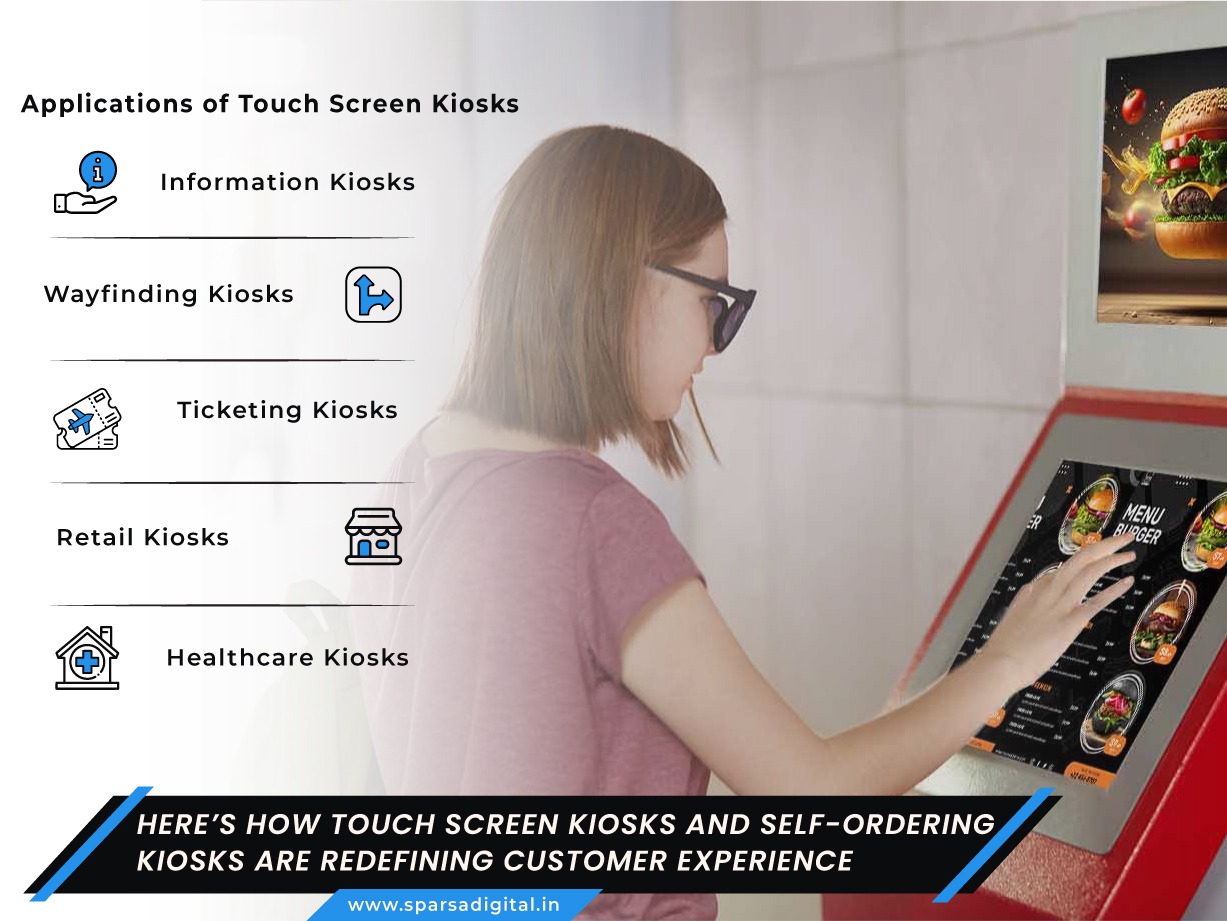In the fast-paced world of technology, touch screen kiosks and self-ordering kiosks have emerged as powerful tools revolutionizing customer interactions across various industries. These interactive and user-friendly devices have transformed traditional customer service, empowering individuals to take control of their experiences. In this blog, we will delve into the evolution, functionalities, benefits, and societal impact of touch screen kiosks and self-ordering kiosks.
I. The Evolution of Touch Screen Kiosks and Self-Ordering Kiosks
- – Early Interactive Technologies
- The roots of touch screen technology can be traced back to the 1960s, with the development of early touch screens by E.A. Johnson. In the 1980s, touch screens started gaining commercial popularity, but their adoption was limited due to high costs and technological constraints.
- – The Rise of Touch Screen Kiosks
- The 1990s witnessed significant advancements in touch screen technology, leading to the introduction of touch screen kiosks in public places like airports, museums, and retail stores. These kiosks provided information and facilitated basic interactions.
- – Self-Ordering Kiosks in the Restaurant Industry
- Self-ordering kiosks gained prominence in the early 2000s, initially finding applications in the restaurant industry. Fast-food chains and quick-service restaurants embraced self-ordering kiosks to improve order accuracy and reduce waiting times.
II. Understanding Touch Screen Kiosks
- – Definition and Functionality
- Digital kiosks are interactive computer terminals equipped with touch-sensitive displays that allow users to navigate through various options, access information, and perform transactions independently.
- – Applications of Touch Screen Kiosks
- a. Information Kiosks: Used in public spaces to provide information on maps, directions, events, and services.
- b. Wayfinding Kiosks: Navigation tools in large venues, such as malls and airports, guiding users to their desired destinations.
- c. Ticketing Kiosks: Enable users to purchase tickets for events, public transportation, and more.
- d. Retail Kiosks: Assist customers with product information, virtual shopping, and online ordering.
- e. Healthcare Kiosks: Facilitate patient check-ins, appointment scheduling, and health-related information dissemination.
- Benefits of Touch Screen Kiosks
- a. Enhanced Customer Experience: Kiosks empower users to access information at their convenience, reducing the need for human assistance.
- b. Efficiency and Speed: Transactions and processes are expedited, leading to shorter wait times and increased customer satisfaction.
- c. Cost Savings: Businesses can optimize labor costs and increase revenue opportunities with the integration of touch screen kiosks.
- d. Data Collection: Kiosks offer valuable data insights, enabling businesses to better understand customer preferences and behaviors.
III. Self-Ordering Kiosks: A Game-Changer in the Restaurant Industry
- – Transformation of the Dining Experience
- Self-ordering kiosks have reshaped the traditional restaurant experience by providing customers with a digital menu and customizable options for their orders.
- – Streamlined Operations
- Restaurants with self-ordering kiosks have reported improved order accuracy, reduced wait times, and increased order volume due to streamlined operations.
- – Upselling and Cross-Selling Opportunities
- Self-ordering kiosks can intelligently suggest add-ons, upgrades, and related items, leading to higher average order values for businesses.
IV. The Impact of Touch Screen Kiosks and Self-Ordering Kiosks on Various Industries
- – Retail Industry
- Touch screen kiosks in retail stores facilitate efficient product browsing, inventory checks, and self-checkout options, enhancing the overall shopping experience.
- – Travel and Hospitality Sector
- Touch screen kiosks in airports, hotels, and tourist centers offer wayfinding assistance, flight check-ins, and hotel bookings, simplifying travel procedures.
- – Healthcare Sector
- Touch screen kiosks in healthcare facilities improve patient engagement, reduce waiting times, and allow patients to access health-related information easily.
- – Education Sector
- Touch screen kiosks in educational institutions aid in campus navigation, event registration, and access to academic resources.
V. The Role of Artificial Intelligence (AI) in Kiosks
- – Personalization
- AI-driven touch screen kiosks can analyze user preferences and offer personalized recommendations, enhancing customer satisfaction.
- – Natural Language Processing (NLP)
- Kiosks equipped with NLP can understand and respond to user inquiries and commands, creating a more intuitive and user-friendly experience.
VI. Overcoming Challenges and Concerns
- – User Adoption and Acceptance
- Some users may initially be hesitant to interact with touch screen kiosks, requiring businesses to focus on user-friendly designs and clear instructions.
- – Data Security and Privacy
- As kiosks collect customer data, ensuring robust security measures and adhering to privacy regulations becomes crucial.
Conclusion
Touch screen kiosks and self-ordering kiosks have redefined the way customers interact with businesses and organizations. From enhancing efficiency and customer satisfaction to providing valuable insights for businesses, these interactive devices have undoubtedly left a lasting impact on various industries. As technology continues to advance, touch screen kiosks and self-ordering kiosks will continue to evolve, fostering a more seamless and empowering customer experience in the years to come.
Come, begin your journey with Sparsa Digital today. Connect with our experts today and get started with the best of technology. Drive your business to the next level with the right use of the latest technology available in the market today. We make sure that each business gets the most out of the deal ensuring further stability.

